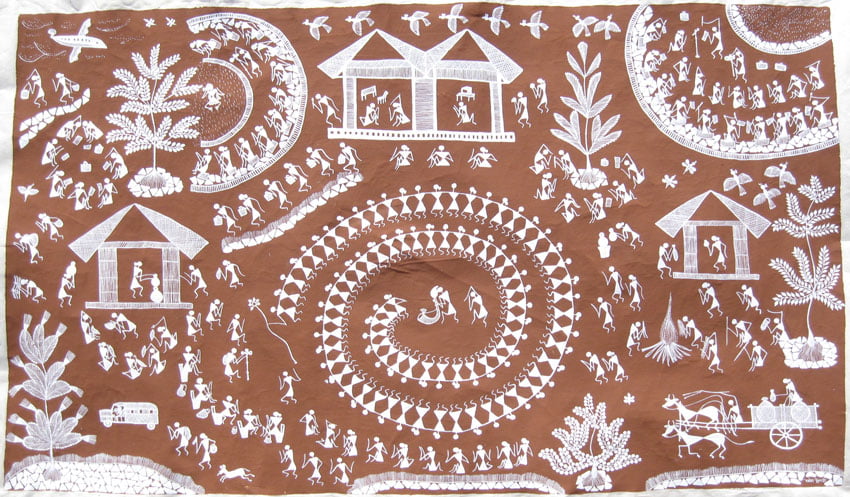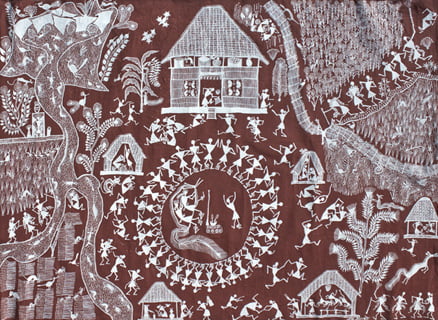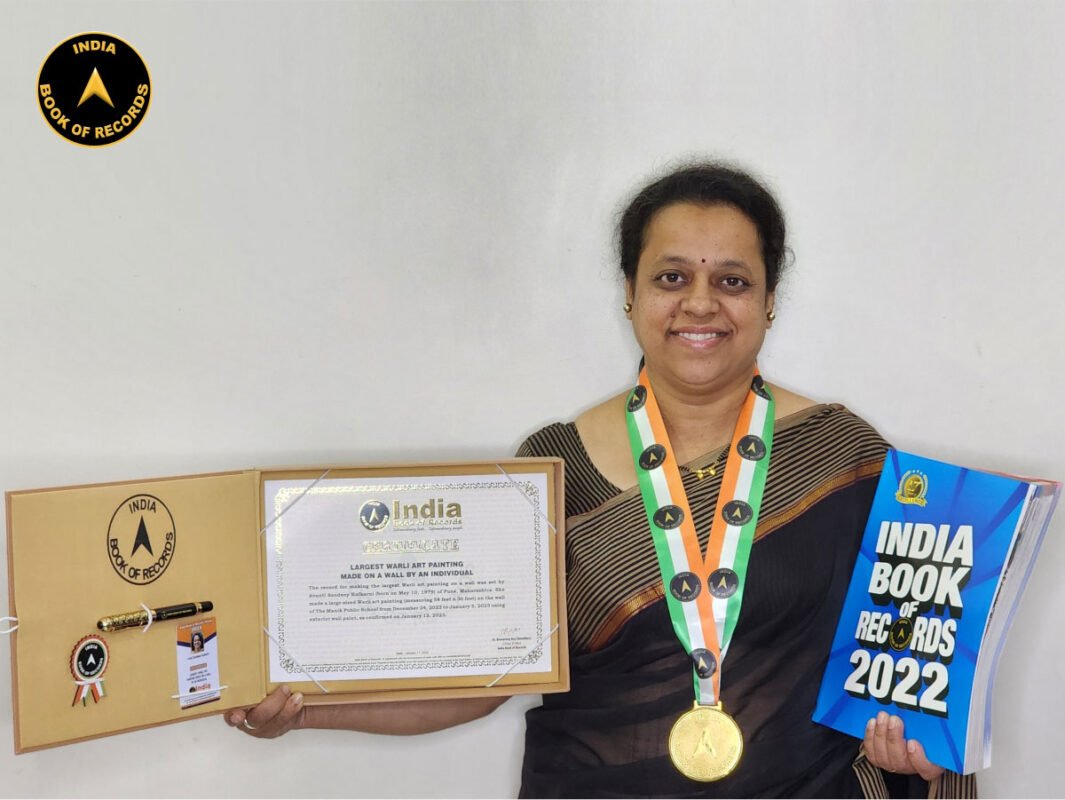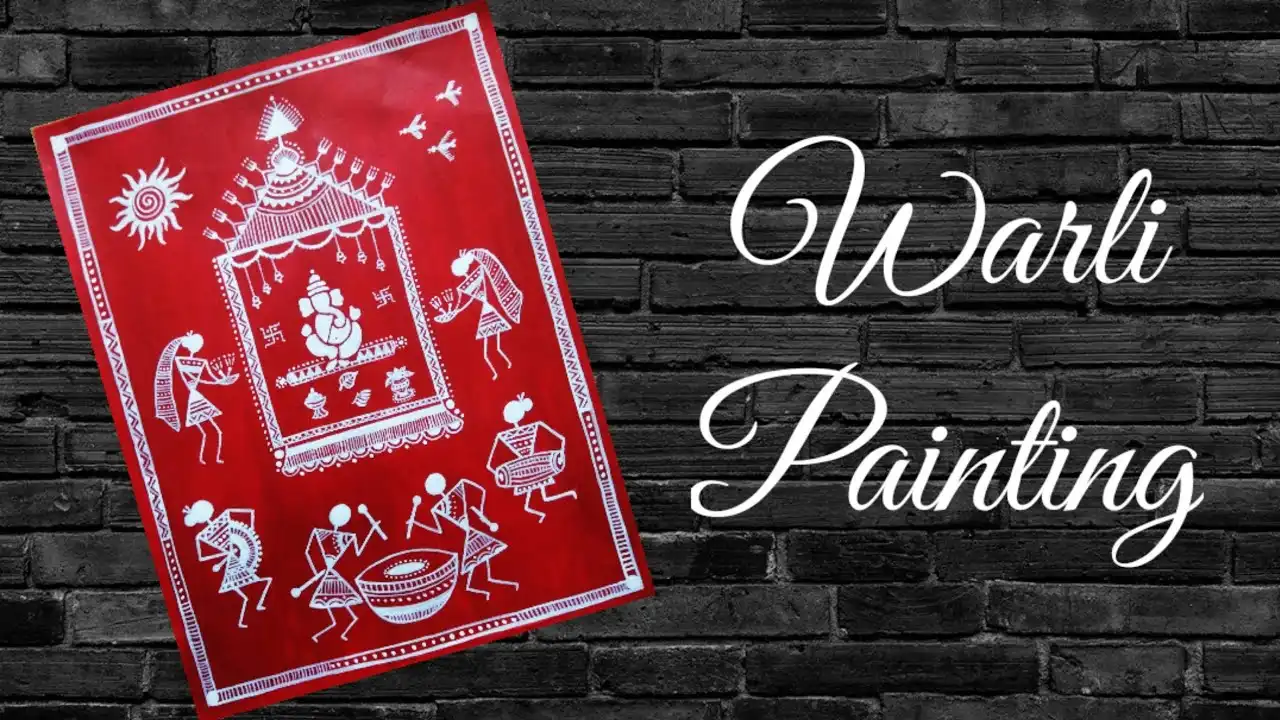Indian Art
Beauty of Warli Art: Famous Warli Art and Artists
Warli art, originating from the Warli tribe of Maharashtra, India, is a mesmerizing form of tribal art that captivates with its simplicity, yet deep cultural significance. Passed down through generations, Warli art depict the community’s everyday life, rituals, and beliefs through their unique artistic expression.
Origins of Warli Art:
Warli art finds its roots in the ancient times of the Warli tribe, dating back to more than 2,000 years. Initially, these art adorned the walls of the tribe’s mud houses, created by the women of the community using basic elements like rice paste, cow dung, and natural colors derived from leaves and soil.
Distinctive Features of Warli Art:
The hallmark of Warli Art is their minimalistic style characterized by rudimentary shapes such as circles, triangles, and squares. Figures, predominantly human and animal forms, are depicted using these basic shapes. Men and women, often portrayed in a circle, dance in a rhythmic pattern, symbolizing unity, harmony, and the cycle of life.
Top 5 Famous Warli Art and Artists:
Delve into the enchanting world of Warli art with a spotlight on famous Art and acclaimed artists. Uncover the cultural richness and simplicity of this ancient Indian tribal art form.
1. Circle of Life by Jivya Soma Mashe:

“Circle of Life” by Jivya Soma Mashe (1934 – 15 May 2018) epitomizes the core essence of Warli artistry. The Art showcases a circle of men and women engaged in a dance, symbolizing the interconnectedness of life. Using minimalistic geometric shapes, Mashe conveys the harmony between humans and nature, portraying the cyclical nature of existence.
2. Rituals in Harmony by Ramesh Hengadi:

“Rituals in Harmony” by Ramesh Hengadi is a depiction of the traditional ceremonies and customs within the Warli community. With earthy tones and simplistic figures, Hengadi captures the essence of rituals, showing men and women engaged in ceremonial activities. The Art radiates a sense of unity and respect for cultural traditions.
3. Folk and Tribal art Balu Mashe

Balu Mashe, son of Jivya Soma Mashe, has continued the legacy of his father, establishing himself as a master of expressive Warli Art. His works, characterized by their dynamic compositions and bold use of color, often explore social and environmental themes, demonstrating the adaptability of Warli art to contemporary concerns.
4. Celebration of Harvest by Nana Panchal:
“Celebration of Harvest” by Nana Panchal captures the jubilant spirit of the Warli tribe during harvest time. Panchal’s Art depicts men and women engaged in traditional dance and festivities, celebrating a bountiful harvest season. The artwork radiates joy and depicts the significance of agricultural abundance in the tribe’s life.
5. Tribal Communion by Dinesh Vaghela:
“Tribal Communion” by Dinesh Vaghela portrays the communal spirit and unity within the Warli community. Vaghela’s artwork features figures in a circular formation, symbolizing social cohesion and collective activities. The Art beautifully encapsulates the essence of togetherness and solidarity among the tribe members.
Each of these Arts represents the unique storytelling aspect of Warli art, depicting facets of tribal life, cultural rituals, and the harmonious relationship between humans and nature using the distinct style of this traditional art form.
Also, Read: Top 10 Famous Jamini Roy Paintings
Largest Warli art made on a wall by an individual

Avanti Sandeep Kulkarni, from Pune, Maharashtra, made the biggest Warli Art on a wall all by herself. She painted a huge Warli art picture that measured 58 feet in length and 30 feet in height at The Manik Public School. She started Art on December 24, 2022, and finished on January 5, 2023, using special paint for outside walls. Her achievement got confirmed on January 13, 2023.
Significance and Influence:
Warli art has transcended geographical boundaries and gained global recognition for its cultural significance and artistic allure. Its influence can be seen in various art forms, from fashion designs to home décor, and continues to inspire contemporary artists worldwide.
The Significance of Warli Art: A Bridge between Cultures
Warli Art, with its simplistic elegance and profound cultural significance, stands as a testament to the creativity and resilience of the Warli tribe. These Arts continue to inspire and captivate art enthusiasts worldwide, serving as a bridge between traditional tribal art and the modern world.
The recognition of Warli Arts as a legitimate art form has not only brought international attention to the Warli tribe but has also empowered them to preserve their cultural heritage and share their unique artistic expression with the world. Today, Warli Arts adorn galleries, museums, and private collections worldwide, serving as a reminder of the enduring power of tribal art and its ability to transcend cultural boundaries.
Conclusion:
The timeless allure of Warli Arts lies in their ability to tell stories of a community’s heritage, rituals, and way of life through simple yet evocative art forms. The works of renowned Warli artists like Jivya Soma Mashe, Ramesh Hengadi, Savitri Bai, and Nana Panchal continue to be celebrated, preserving the legacy of this ancient tribal art form for generations to come.
Warli art stands as a testament to the rich cultural heritage of the Warli tribe and serves as a source of inspiration for those seeking to delve deeper into the traditions and artistic expressions of indigenous communities.
Through their Arts, the Warli artists have not just depicted scenes of daily life but have immortalized a piece of history, inviting viewers to appreciate the beauty in simplicity and the profoundness of a culture reflected through art.
This fascinating art form continues to weave its magic, bridging the gap between tradition and modernity, leaving an indelible mark on the canvas of global artistry.
This article attempts to shed light on some of the prominent Warli artists and their impactful contributions to preserving and promoting this cherished tribal art form.


Thank you for such an informative post. I especially liked the detailed information on artists like Jivya Soma Mashe, Ramesh Hengadi and Balu Mashe. Their contributions to the Warli art form are truly remarkable.
In addition to the mentioned artists, I would suggest including insights on the techniques and materials used by these artists. Understanding the traditional methods and tools can deepen the appreciation for their work. Furthermore, it would be interesting to learn about the influence of modernization and urbanization on contemporary Warli artists. How are artists adapting their styles and themes to reflect these changing times?